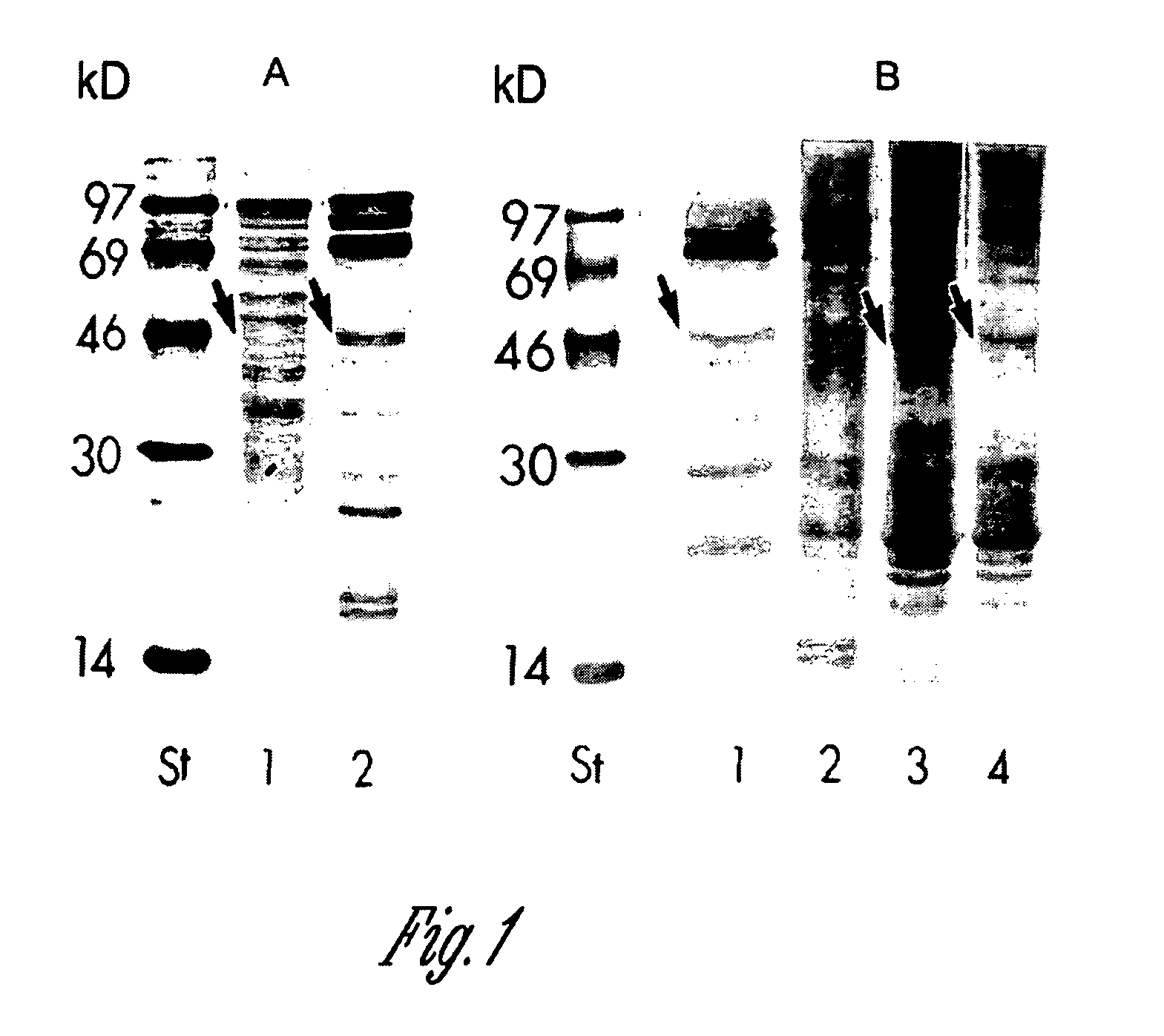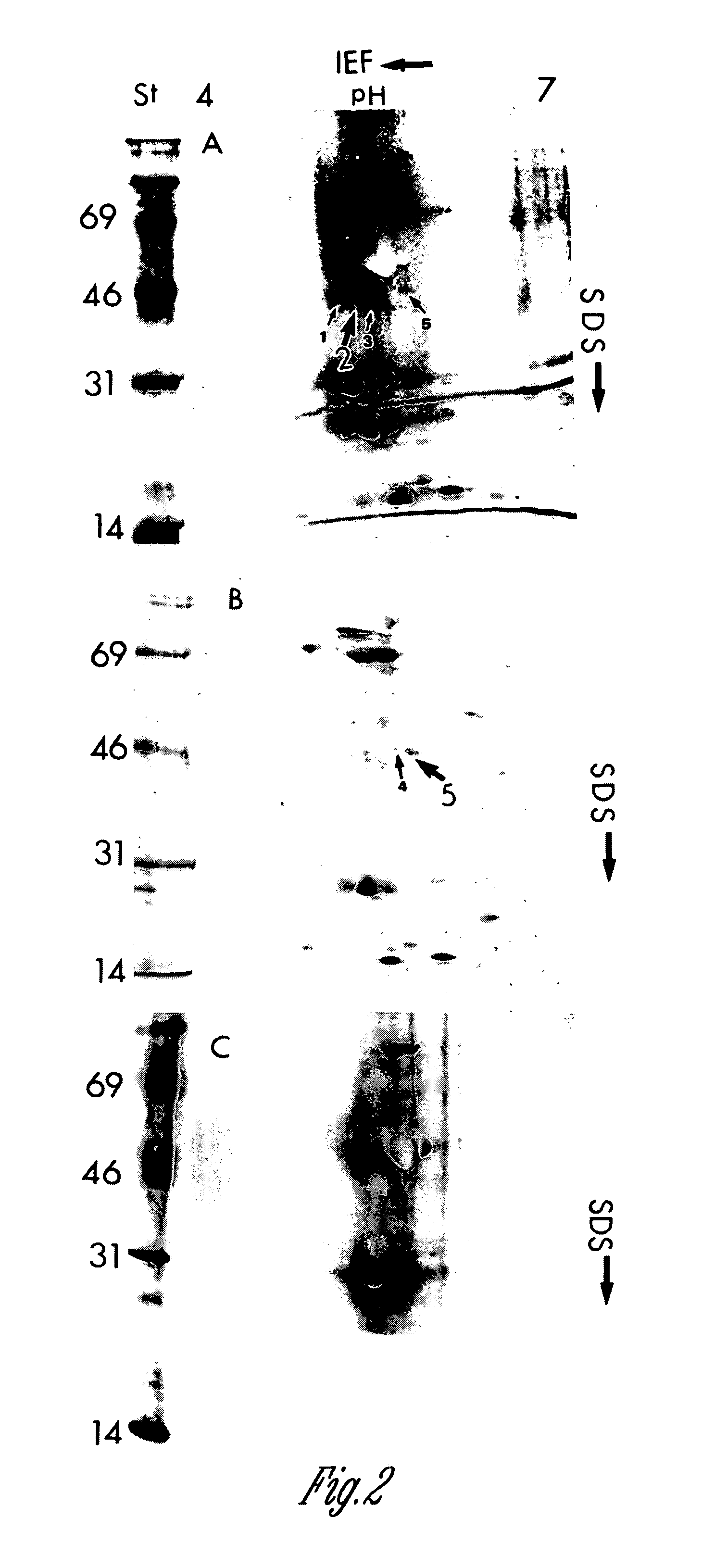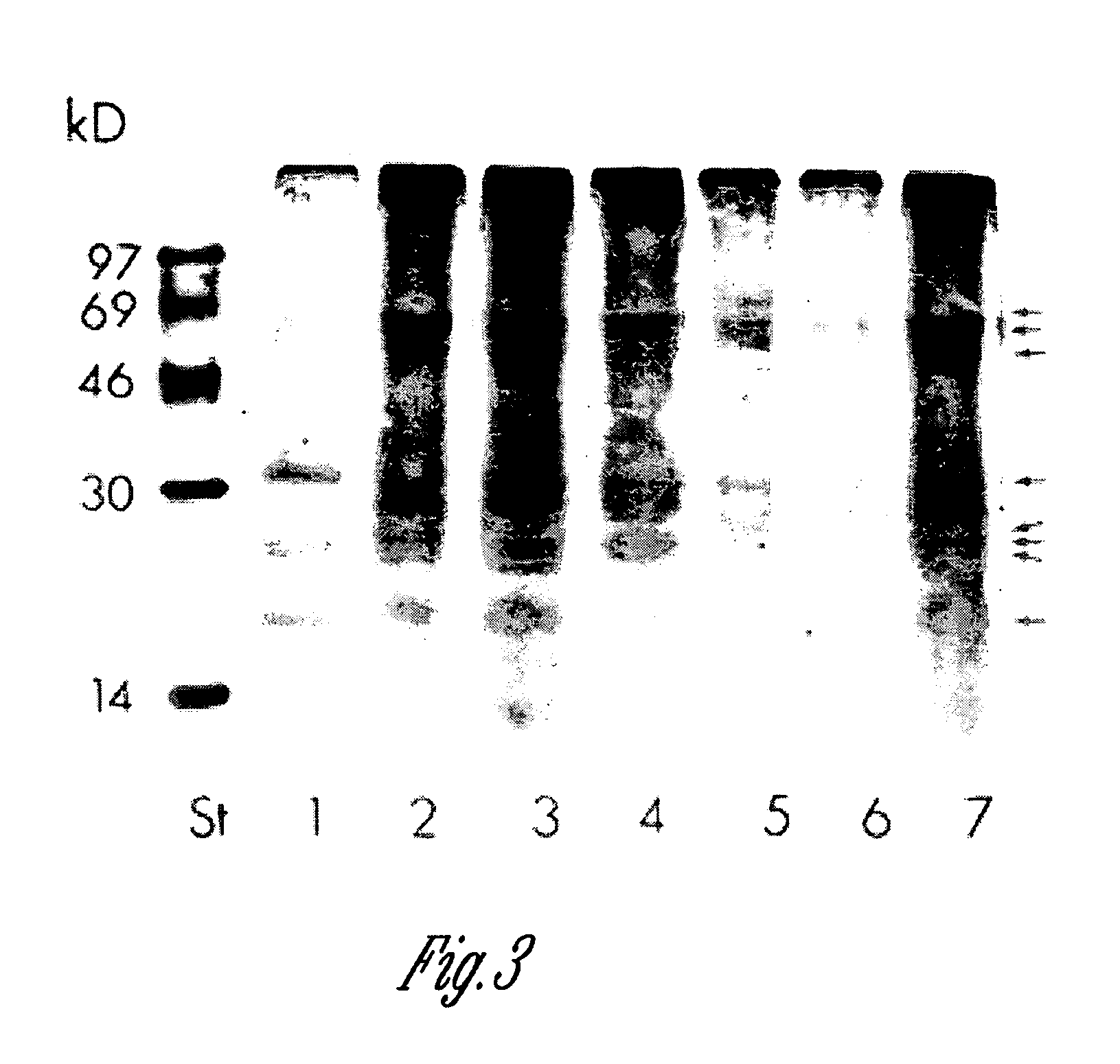Maize chloroplast protein synthesis elongation factors and methods of use for same
a technology of elongation factor and maize chloroplast, which is applied in the field of plant molecular biology, can solve the problems of affecting the synthesis efficiency of maize chloroplast protein, etc., to achieve the effect of increasing the refolding of unfolded proteins, reducing the cost of crop and ornamental plant production, and increasing heat toleran
- Summary
- Abstract
- Description
- Claims
- Application Information
AI Technical Summary
Benefits of technology
Problems solved by technology
Method used
Image
Examples
example 1
Chloroplast Structure After Water and High-Temperature Stress in Heat-Resistant and Non-Heat-Resistant Strains of Maize
Materials and Methods
[0112]Maize line ZPBL 1304 and maize line ZPL 389 were analyzed. In order to compare lines at similar developmental stages, lines that have the same time to flowering were selected.
Experimental Setup and Growth Conditions
[0113]Experimental setup and growth conditions were similar to those described by Ristic et al. (1991). In two experiments, experiment A had six replicates, and experiment B had five replicates. Experimental setup and growth conditions were identical for both experiments unless otherwise stated. For each replicate, 11 kernels of each line were sown in each of two pots (pot diameters at the top and the bottom were 20.5 cm and 14 cm, respectively; pot height, 20 cm) containing a mixture of soil: peat: sand (3:1:1, v / v / v). Plants were grown under controlled environmental conditions—12-h photoperiod, 280 μmol m−2 sec−1 PPFD, 24 C / 18...
example 2
Measurement of Steady State Levels of EF-Tu mRNA in the Drought and Heat Tolerant ZPBL 1304 Maize Line Under Normal and Heat Stress Conditions
Materials and Methods
[0131]The steady state levels of ZPBL 1304 EF-Tu mRNA were measured using Northern blot analysis. Total leaf RNA was isolated from control and heat-stressed plants of ZPBL 1304, using a commercial RNA isolation kit (Ambion). The RNA was fractionated using 1% agarose gel electrophoresis and transferred onto positively charged nylon membrane. Cross linking was achieved by baking the membrane at 80° C. for 2 h. A maize EF-Tu EST was used as a DNA probe for hybridization of the RNA blots.
Results and Conclusions
[0132]The results show increased levels of EF-Tu mRNA during early stages of heat stress. Compared to control, a significant increase in the intensity of the hybridization band was observed at 41° C. and 45° C. (FIG. 4). The results suggest that during heat stress the synthesis of chloroplast protein synthesis elongation...
example 3
Identification of EF-Tu in the ZPBL 1304 Maize Line
Materials and Methods
Plant Material and Growth Conditions
[0133]Seeds of ZPBL 1304 (Zea mays L.) were washed with autoclaved distilled water and germinated in the dark on a single layer of moist germination paper. After three days, the seedlings were planted in pots (4 seedlings per pot) containing a mixture of soil: peat: sand (3:1:1, v / v / v). Plants were maintained in a growth chamber at 25 / 20° C. day / night temperature, 12 h photoperiod with 280 μumol m−2 s−1 light, 70% humidity and regular watering (Bhadula et al., 1998).
Isolation, Purification, and Sequencing of 45 HSPs
[0134]Three-week old plants were used for the isolation and purification of the 45 kD polypeptides. Plants were exposed to 45° C. heat stress for 3 h (Bhadula et al., 1998). Two hours after the beginning heat stress, the second leaf blades were labeled with 10 μL of [35S]methionine (370 MBq / mL; specific activity 37 TBq / mmol, Amersham, Canada) for 1 h (Ristic et al.,...
PUM
| Property | Measurement | Unit |
|---|---|---|
| temperature | aaaaa | aaaaa |
| temperature | aaaaa | aaaaa |
| speeds | aaaaa | aaaaa |
Abstract
Description
Claims
Application Information
 Login to View More
Login to View More - R&D
- Intellectual Property
- Life Sciences
- Materials
- Tech Scout
- Unparalleled Data Quality
- Higher Quality Content
- 60% Fewer Hallucinations
Browse by: Latest US Patents, China's latest patents, Technical Efficacy Thesaurus, Application Domain, Technology Topic, Popular Technical Reports.
© 2025 PatSnap. All rights reserved.Legal|Privacy policy|Modern Slavery Act Transparency Statement|Sitemap|About US| Contact US: help@patsnap.com



